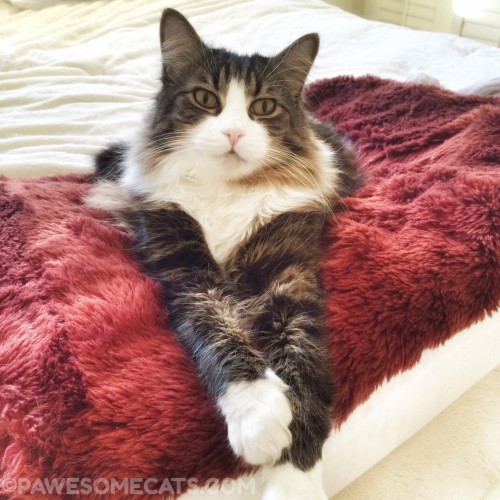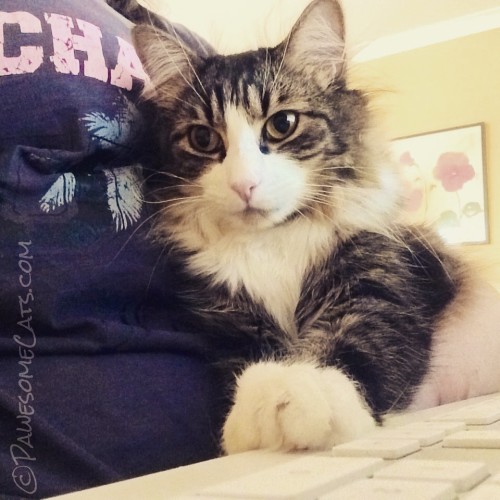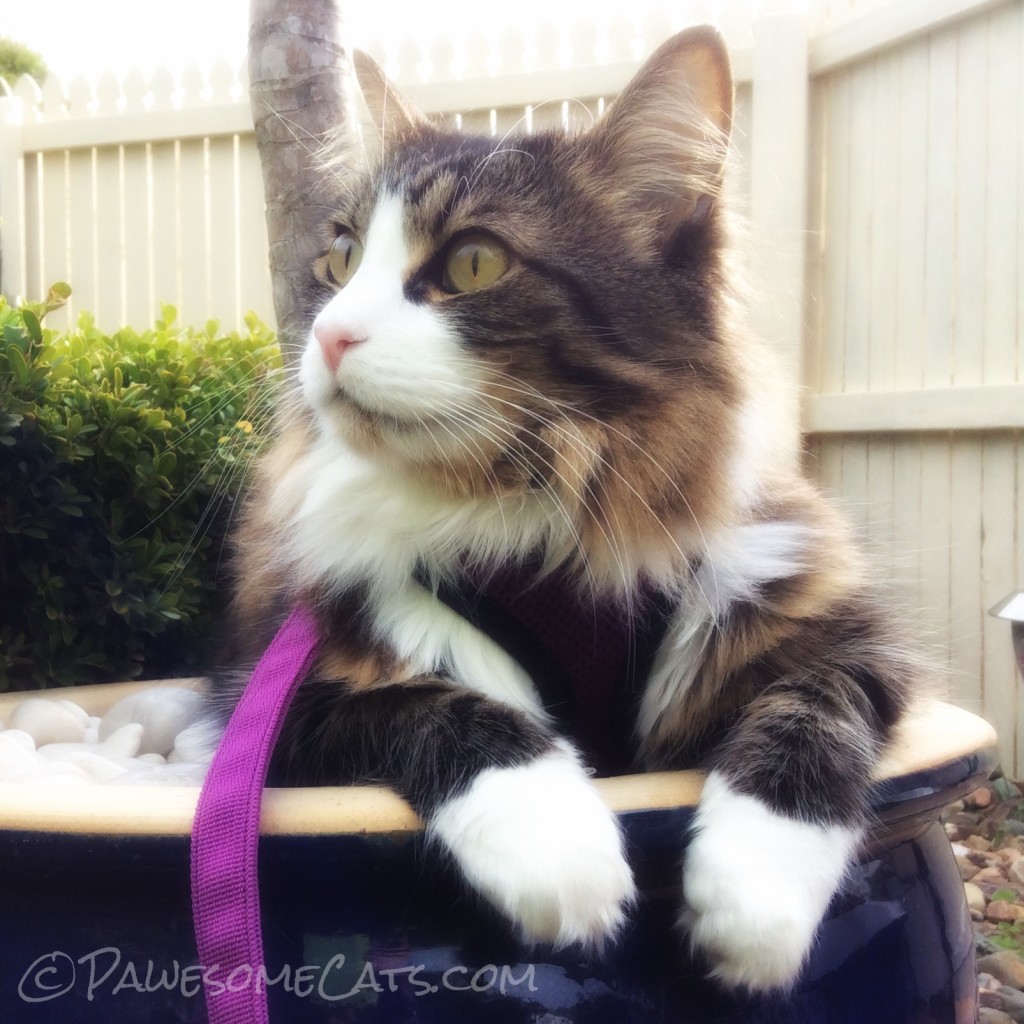This post is part of our “Journey to Raw” series, published every Wednesday, and comes to you from Tracy Stillman, author of Pawesome Cats, and “mom” to five lovely kitties: Coco, Amber, Ava, Max… and Charlie.

Charlie
Charlie came into my life in December 2011, as a 3-month-old kitten, when I decided to foster through our local rescue organisation. He is now four years old.
Charlie’s kittenhood was fraught with health issues including ringworm, calici-virus, corona-virus, cat flu and giardia. It seemed that just when we were getting over one thing, he was struck with something else. Despite being sickly and spending a lot of time at the vet, and on various medications, he’s always been a very happy and loving boy. He also has a voracious appetite and loves his food.
Around two years of age, Charlie showed the first signs of colitis. Sometimes his stools included blood and mucous, other times he had diarrhoea. I struggled to figure out what was going on with him, and what foods were causing the problem. The first vet we saw put him on Metrodazinole and suggested a sensitive stomach vet prescription diet. The medication cleared up the inflammation and his bowels started to work normally, but only temporarily.
Over the next year, we saw and consulted with three different vets who all prescribed medication and recommended different vet prescription diets. This was a tough time for Charlie. He could smell the food the other cats were eating and didn’t understand why he was forced to eat this bland baby food variety. Some meals, he’d just refuse to eat and walk around the house howling in pain. Throughout this time his poop varied from explosive diarrhoea to pudding to semi-soft stools depending on the actual diet and medication he was taking. It was heartbreaking to watch.

Not feeling well.
We exhausted most of the vet prescription foods on the market, until someone suggested a novel protein diet. I didn’t even know what that was. I’d already tried a lot of different foods so there weren’t many choices of protein left that would be novel for Charlie. That’s when I stumbled across ZiwiPeak’s venison cat food. Charlie was really happy to be eating venison wet food, and for the first six weeks he happily ate everything on his plate at mealtimes. I switched his brother Max to the same diet, which meant they could eat side by side again rather than shutting Charlie in a separate room for meals. He seemed happier and definitely healthier. His poop improved significantly on the novel protein diet but it wasn’t perfect and there was still some blood and mucous present and instances of diarrhoea. Then, he decided he didn’t want that food any more, and I couldn’t get him to eat it.
At the end of 2014, whilst researching online, I came across the IBD Kitties website, and Facebook page. The advice from the group was invaluable; although the difficulty for me, was that many of the recommended foods were US-centric and not available Down Under. This led to my own investigation, and I started to extensively research cat foods available in Australia, their ingredients and their potential side effects. I am still astounded by some of the suspect ingredients that manufacturers put in pet food, it’s no wonder so many of our pets are getting sick.
In early 2015, following more research and after having exhausted all other options I decided to transition Charlie and the other cats to a raw food diet, which led me to yet another Facebook group Raw Feeding for IBD Cats. Personally, I eat a largely vegetarian diet, and I’m fairly squeamish when it comes to blood and animal organs. With this in mind, my first foray into raw food for the cats was a pre-packaged, frozen turkey BARF mix available at our local pet store. Charlie loved this food and took to a raw food diet immediately, so I subsequently transitioned our feline family of four onto the same diet to make it easier at mealtimes and because I believe it’s a better choice for their long-term health. The frozen BARF included all the necessary supplements although it also included yogurt. Charlie’s bowel motions were varied, one day he’d be fine, the next he’d have diarrhoea or his stool would include mucous and blood. I started to introduce a human grade pro-biotic and s.boulardii, which helped a little.
Unfortunately, after five months eating BARF Turkey, Charlie and the other cats started vomiting after eating. The frozen food had been chunky in consistency, but now resembled baby food, so clearly something had changed in the manufacturing process. The company denied any change to ingredients or process – but clearly that wasn’t true. There were no other suitable frozen BARF alternatives in Australia.
For the following few weeks, while I figured out what to do next, Charlie ate small chunks of raw meat that he seemed to like although I was very aware that it wasn’t nutritionally balanced. I was hesitant to try raw food from scratch for a couple of reasons: the thought of it made me squeamish and I was scared of getting the balance wrong and jeopardizing his long-term health. Thanks to the support of members of the Raw Feeding for IBD Cats Facebook group, I took the plunge and in July this year, I made my first batch of homemade ground raw (I’ve written a blog post about the raw recipe I use on the Pawesome Cats blog).
Today, Charlie has mostly good days with the occasional not so good day as evidenced in the litter box, but with a homemade raw food diet, probiotics including s.boulardii, pumpkin with every meal and a low dose of Prednisolone every second day he is doing much better. Transitioning to a raw food diet is the best thing I’ve done for Charlie and our other cats – I wish I’d switched to raw sooner!

Raw fed and looking good!
If you feed a home-prepared raw menu to your kitties and would like to see your story featured here, please contact us via private message through Facebook on our page or in our group or leave a comment below!
And if you’re interested in giving raw a try for yourself, check out our Raw Feeding and Transitioning Your Cat to Raw sections!

